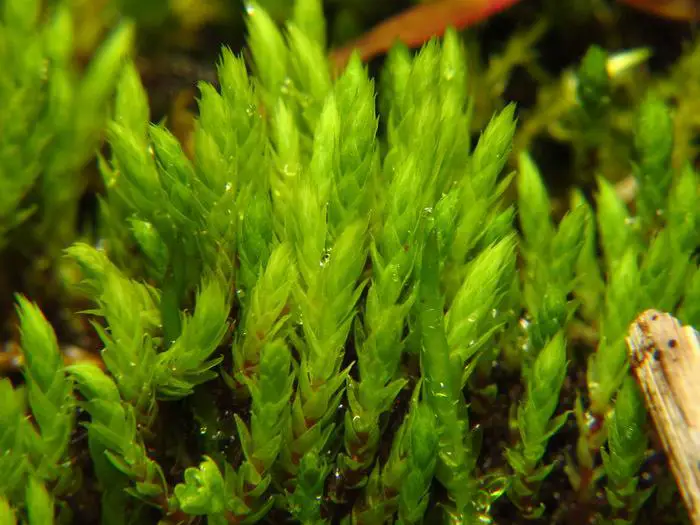
Philonotis_calcarea_003.JPG from: https://cisfbr.org.uk/Bryo/Cornish_Bryophytes_Philonotis_calcarea.html
Exploring the Fascinating World of Philonotis calcarea var. orthophylla Moss
Introduction
Today we’re diving into the captivating realm of Philonotis calcarea var. orthophylla Schiffn., a remarkable moss species from the Bartramiaceae family, commonly known as Philonotis. This tiny but mighty plant plays important ecological roles and boasts some incredible adaptations. Get ready to be amazed by the wonders of Bryophyta!
Background on Philonotis Mosses
Philonotis

Philonotis_calcarea_2005.07.31_10.28.02.jpg from: https://de-academic.com/dic.nsf/dewiki/1105051
is a genus of mosses belonging to the Bryopsida class. There are over 150 Philonotis species found across the globe. They typically grow in dense tufts or cushions in wet, calcareous habitats like seeps, springs, and stream banks. The name “Philonotis” comes from Greek, meaning “loving moisture” – quite fitting for these water-loving mosses!
Morphology and Identification
P. calcarea var. orthophylla forms small, dense tufts that are yellowish-green to glaucous green in color. The stems are erect and range from 1-4 cm tall. Leaves are lanceolate to ovate-lanceolate, 1-2 mm long, with serrated margins and a

2019-08-26-17-29-07.jpg from: https://www.britishbryologicalsociety.org.uk/learning/species-finder/philonotis-calcarea/
strong central costa

Philonotis_calcarea_(e%2C_144356-474706)_3598.JPG from: https://handwiki.org/wiki/File:Philonotis_calcarea_(e,_144356-474706)_3598.JPG
(midrib). The seta (stalk) is 1-3 cm long and supports a globose to ovoid capsule.

864567.jpg from: https://www.bio-forum.pl/messages/3280/864564.html

Campylopus-pyriformis-Drava-sik-Darany-Nagyberek-photo-Cs-Nemeth-30092015_Q640.jpg from: https://www.researchgate.net/figure/Philonotis-calcarea-Buekk-Mts-Miskolc-Csipkes-kut-photo-Cs-Nemeth-08102014_fig9_287402484
| Character | Description |
|---|---|
| Tufts | Dense, yellowish-green to glaucous |
| Stem | Erect, 1-4 cm tall |
| Leaves | Lanceolate to ovate-lanceolate, 1-2 mm long, serrate margins, strong costa |
| Seta | 1-3 cm long |
| Capsule | Globose to ovoid |
Global Distribution and Habitat
P. calcarea var. orthophylla has a wide distribution, found in Europe, Asia, Africa, and the Americas. It grows on wet calcareous substrates like seeps, springs, stream banks, and dripping cliffs, often in shaded locations. This variety is considered a calciphile, meaning it prefers calcium-rich environments.
Ecological Roles and Adaptations
Like other mosses, Philonotis plays crucial roles in its ecosystems:
- Erosion control: Dense moss cushions stabilize soil and prevent erosion.
- Water retention: Moss acts as a sponge, absorbing and slowly releasing water.
- Nutrient cycling: Mosses trap and recycle nutrients, enhancing soil fertility.
- Microhabitats: Moss tufts provide shelter for microorganisms and tiny invertebrates.
P. calcarea var. orthophylla

original.jpeg from: https://www.gbif.org/es/species/2676091
has adaptations for its wet, calcareous habitat:
- Leaf surface wax: Reduces water loss and enhances water repellency.
- Rhizoids: Root-like structures anchor the moss and absorb water and nutrients.
- Calcium tolerance: Cellular mechanisms allow it to thrive in high-calcium environments.
Conclusion
Philonotis calcarea var. orthophylla may be small, but it is a true survivor, well-adapted to its niche habitat. This marvelous moss plays a big part in maintaining the health and balance of its ecosystem. The next time you see a lush, green moss cushion, take a closer look – it might just be our friend Philonotis, working its magic! What other tiny wonders of nature have you discovered lately?